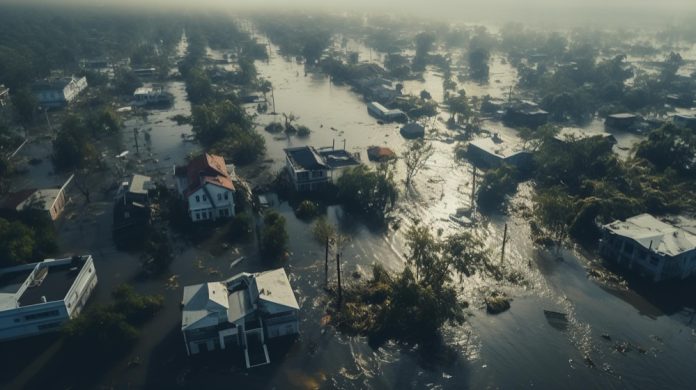The recent heavy rainfall and subsequent flooding in East Africa have unleashed widespread havoc, profoundly impacting both businesses and individuals alike. From tragic loss of life and property devastation to the disruption of essential operations and the compromising of business viability, the aftermath of these floods has cast a pervasive shadow across the entire region. Its ramifications ripple through various sectors and industries, leaving behind a landscape of challenges and uncertainties for all affected parties to navigate.
While certain industries such as agriculture, transportation, and construction are more visibly impacted by flooding due to their reliance on physical infrastructure and natural resources, the truth is that any business operating in flood-prone areas is vulnerable to its effects. Retailers may suffer from reduced foot traffic or damaged storefronts, while service-based businesses may struggle to maintain continuity in their operations due to disrupted communication networks or inaccessible premises.
Read also: Mitigating flooding in Africa needs us to adopt sustainability
One of the immediate impacts of heavy rainfall and flooding is the disruption of logistics. Roads become impassable, bridges may be washed away, and transportation networks grind to a halt. This not only affects the movement of goods but also the ability of employees to reach their workplaces. As a result, businesses experience delays in deliveries, production slowdowns, and increased operational costs due to rerouted transportation. The workforce itself may be stressed by the challenges posed by the inclement weather, leading to absenteeism. Even those who do make it to work may find themselves distracted or preoccupied with personal concerns related to the flooding, further impacting their efficiency.
Business viability may become compromised during times of flooding. Firstly, there is the direct loss of assets and inventory due to water damage. Floodwater can submerge warehouses, stores, and production facilities, causing significant financial losses for businesses, especially those with large physical inventories or valuable equipment. Power outages also become common during heavy rainfall and flooding events, disrupting operations that rely on electricity. Without power, businesses may be forced to halt production, leading to further financial losses and delays in fulfilling orders.

One less obvious but significant impact of flooding is the reluctance of potential investors to engage in projects within affected areas. Unlike immediate disruptions, this effect might not be immediately apparent but carries profound consequences. The looming threat of future flooding causing damage or financial losses often goes unnoticed, yet it instills a sense of caution among investors. Consequently, they may opt for more conservative investment approaches or entirely bypass regions prone to such disasters.
During flooding, businesses often find themselves making impromptu decisions out of necessity. This adaptability is inherent to their survival instincts. In such moments of crisis, they may feel compelled to allocate resources to unforeseen expenses like flood barriers, climate insurance, or backup power generators, despite these not being part of their initial financial plans. These decisions add strain to their budgets, but they are deemed necessary for weathering the immediate challenges posed by the flooding and preparing for future events.
However, when looking at the broader implications, these investments can disrupt the company’s organization. The need to reallocate resources and make cutbacks in other areas can have lasting effects on the business. Such decisions might affect the company’s long-term stability and growth. This underscores the critical importance of businesses developing a comprehensive climate adaptation strategy. This strategy involves identifying and assessing risks, implementing measures to mitigate these risks, and building resilience to withstand future challenges. Planning for such investments in advance is far preferable to being caught off guard and forced to deal with the aftermath of damage and losses, or having to make impromptu decisions that disrupt the company’s investment plans.
In the long run, a climate adaptation strategy serves not only as an investment but also as a safety net that can benefit the business for years to come. By proactively identifying and addressing risks associated with climate-related events like flooding, businesses can minimize the likelihood of significant disruptions and financial losses. Moreover, having a well-defined strategy in place alleviates the psychological stress of constantly worrying about potential losses due to natural disasters. It provides a sense of security and peace of mind, allowing businesses to focus their energy and resources on sustainable growth and development.
The current situation underscores the critical importance for businesses to prioritize climate adaptation. By implementing effective risk mitigation strategies, they not only safeguard their operations and investments but also ensure long-term resilience. This proactive approach lays the foundation for sustained growth and success in an increasingly unpredictable environment. Embracing climate adaptation is not just a response to immediate challenges but a strategic investment in the future viability and sustainability of businesses worldwide.




